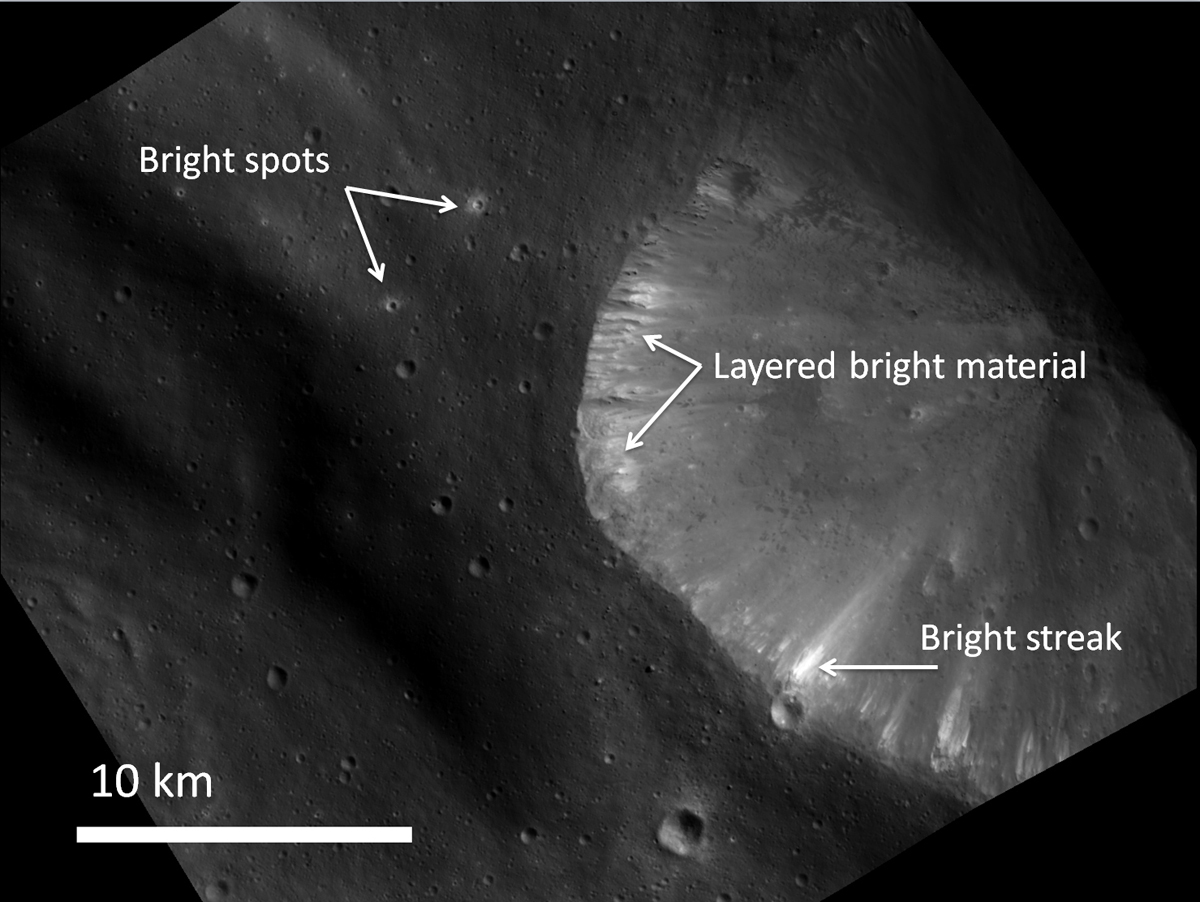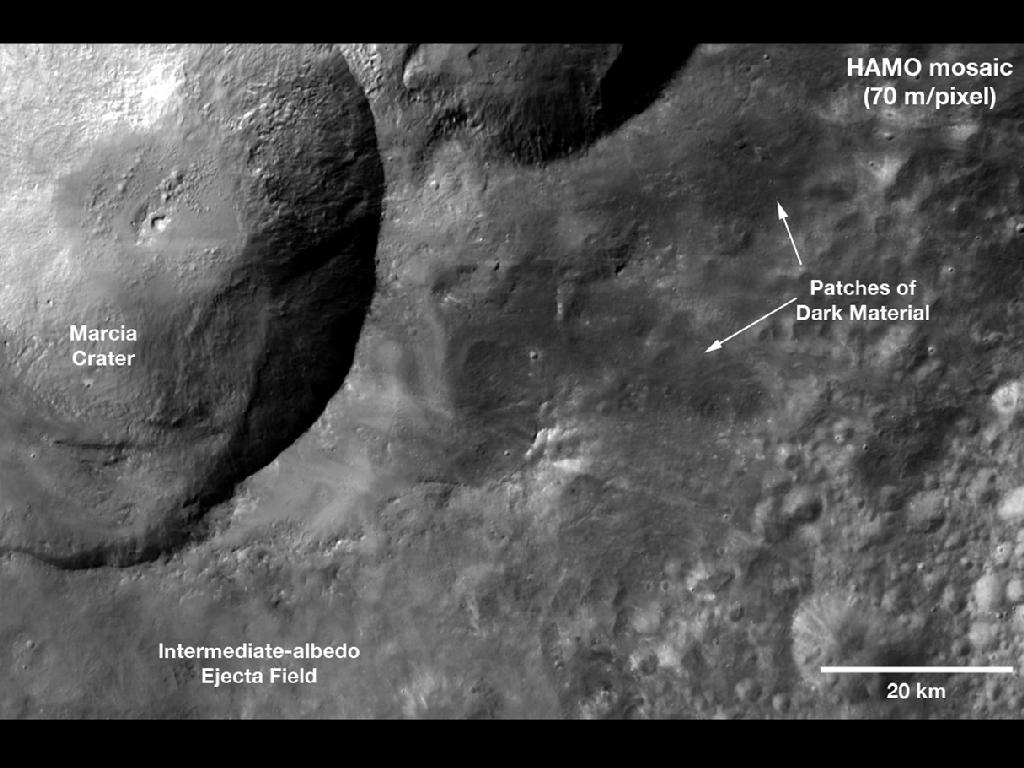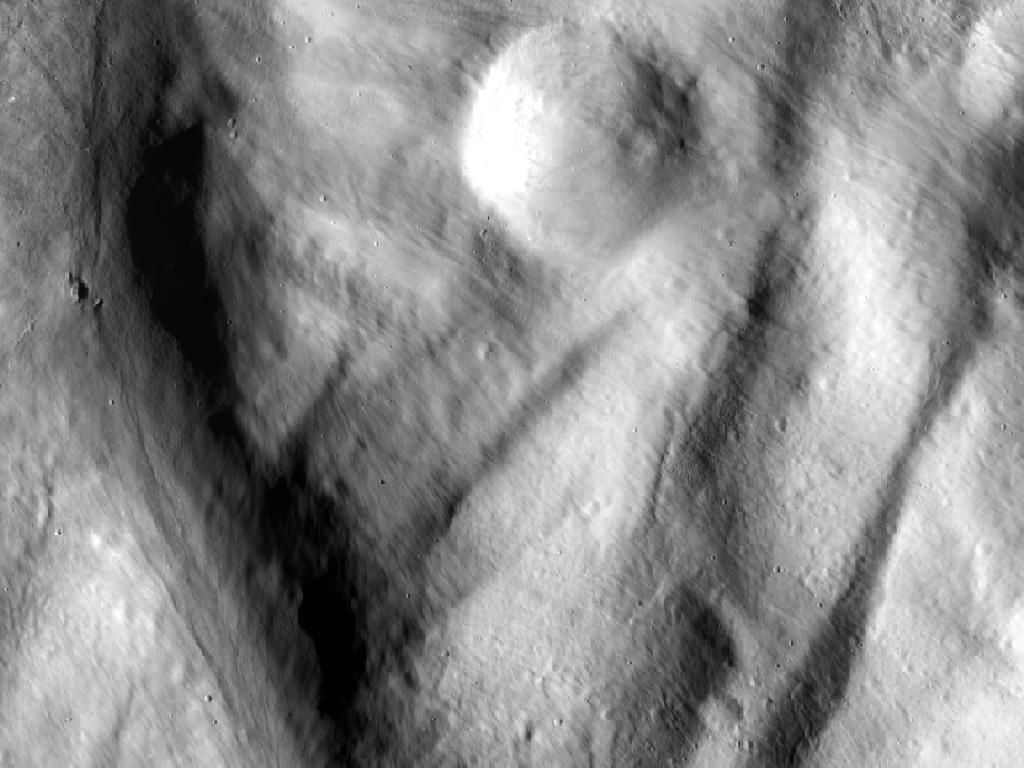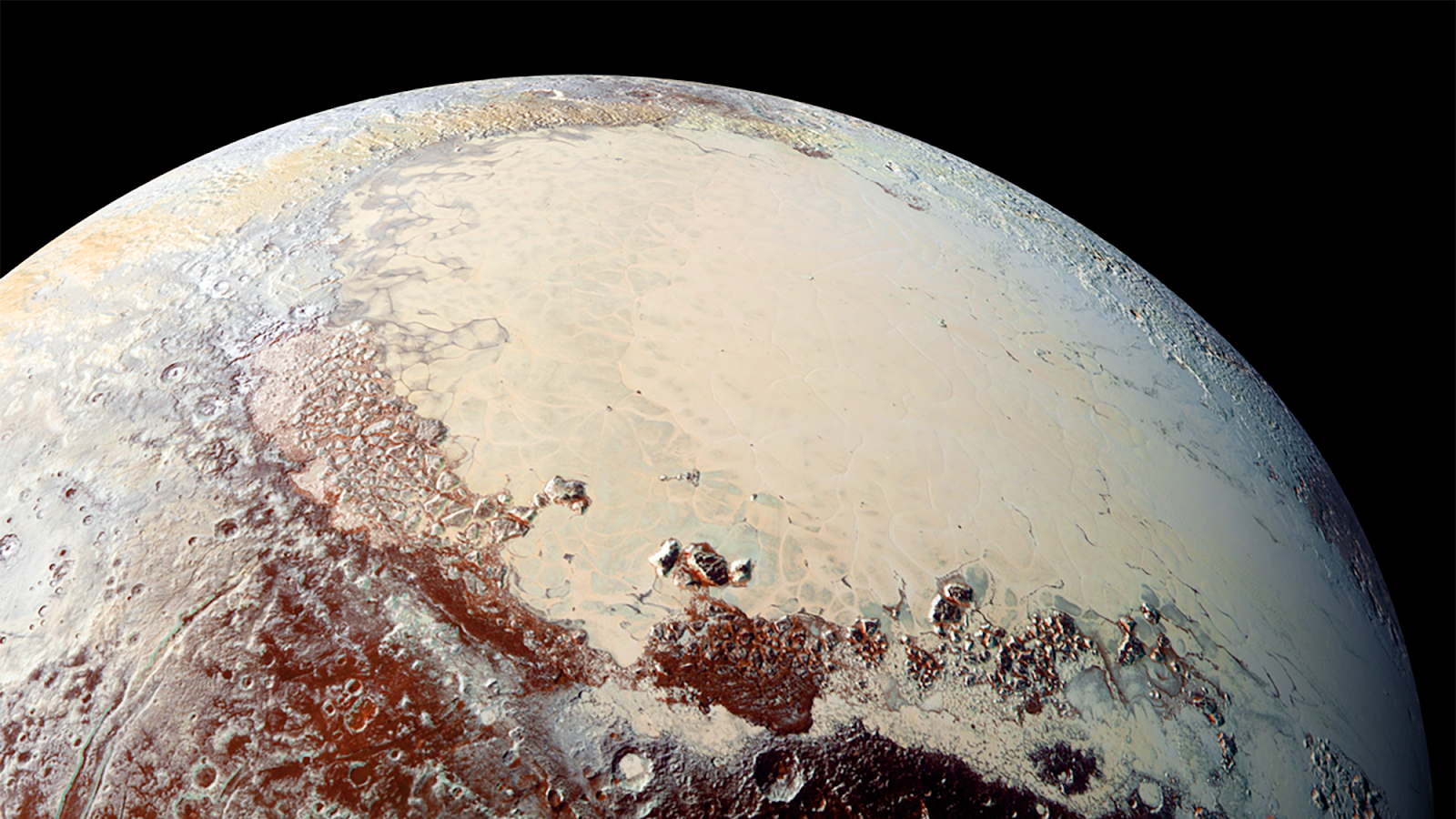New Photos of Asteroid Vesta Reveal Surprisingly Bright Spots

A NASA spacecraft orbiting the huge asteroid Vesta has snapped amazing new photos of the colossal space rock, images that reveal strange features never-before-seen on an asteroid, scientists say.
The new photos of Vesta from NASA's Dawn spacecraft highlight odd, shiny spots that are nearly twice as bright as other parts of the asteroid — suggesting it is original material left over from the space rock's birth 4 billion years ago, NASA officials said today (March 21).
With a width of about 330 miles (530 km), asteroid Vesta is one of the largest and brightest objects in the main asteroid belt between the orbits of Mars and Jupiter. NASA's Dawn probe has been orbiting Vesta since 2011 to study the space rock in unprecedented detail.
"Our analysis finds this bright material originates from Vesta and has undergone little change since the formation of Vesta over 4 billion years ago," said Jian-Yang Li, a Dawn participating scientist at the University of Maryland, College Park, in a statement. "We're eager to learn more about what minerals make up this material and how the present Vesta surface came to be."

Asteroid Vesta unveiled
Li and his colleagues unveiled Dawn's new views of Vesta today at the 43rd Lunar and Planetary Science Conference in The Woodlands, Texas.
The photos show surprisingly bright spots all over Vesta, with the most predominant ones located inside or around the asteroid's many craters. The bright areas range from large spots (around several hundred feet across) to simply huge, with some stretching across 10 miles (16 kilometers) of terrain. [Video: Vesta — Asteroid or Dwarf Planet?]
"Dawn's ambitious exploration of Vesta has been going beautifully," said Marc Rayman, Dawn chief engineer at NASA's Jet Propulsion Laboratory in Pasadena, Calif., which oversees the mission. "As we continue to gather a bounty of data, it is thrilling to reveal fascinating alien landscapes."
Breaking space news, the latest updates on rocket launches, skywatching events and more!
Dawn mission scientists suspect the bright patches on Vesta were exposed during violent collisions with other space rocks. These impacts may have spread the bright material across the asteroid and mixed it together with darker material on Vesta's surface, researchers said.
Astronomers have known about variations in Vesta's brightness for some time. Photos taken by the Hubble Space Telescope before Dawn arrived at the asteroid also revealed the bright patches.

Never-before seen asteroid melt
But only the close-up photos from the Dawn probe have revealed the surprising variety of dark blotches on Vesta, which appear as dark gray, brown or reddish blemishes, NASA officials said.
In some views, these darker spots are small deposits near impact craters, while in other photos they appear in larger concentrations. These darker spots on Vesta may also be the result of collisions on the asteroid, researchers said.

Slow carbon-rich asteroids may have created some of the smaller dark material deposits without carving out a big crater. Meanwhile, faster objects may have potentially slammed into Vesta so hard they melted the big asteroid's crust, which could have also created the dark spots.
"Some of these past collisions were so intense they melted the surface," said Brett Denevi, a Dawn participating scientist at the Johns Hopkins University Applied Physics Laboratory in Laurel, Md. "Dawn's ability to image the melt marks a unique find. Melting events like these were suspected, but never before seen on an asteroid."
NASA launched the $466 million Dawn spacecraft in 2007 and Vesta is only the first stop of the spacecraft's two-asteroid tour. Dawn arrived at Vesta in July 2011 and is expected to spend about a year there before heading off to its next target — the even larger asteroid Ceres, which is also classified as a dwarf planet.
Dawn is expected to arrive at Ceres in February 2015.
You can follow SPACE.com Managing Editor Tariq Malik on Twitter @tariqjmalik. Follow SPACE.com for the latest in space science and exploration news on Twitter @Spacedotcom and on Facebook.
Join our Space Forums to keep talking space on the latest missions, night sky and more! And if you have a news tip, correction or comment, let us know at: community@space.com.

Tariq is the award-winning Editor-in-Chief of Space.com and joined the team in 2001. He covers human spaceflight, as well as skywatching and entertainment. He became Space.com's Editor-in-Chief in 2019. Before joining Space.com, Tariq was a staff reporter for The Los Angeles Times covering education and city beats in La Habra, Fullerton and Huntington Beach. He's a recipient of the 2022 Harry Kolcum Award for excellence in space reporting and the 2025 Space Pioneer Award from the National Space Society. He is an Eagle Scout and Space Camp alum with journalism degrees from the USC and NYU. You can find Tariq at Space.com and as the co-host to the This Week In Space podcast on the TWiT network. To see his latest project, you can follow Tariq on Twitter @tariqjmalik.
